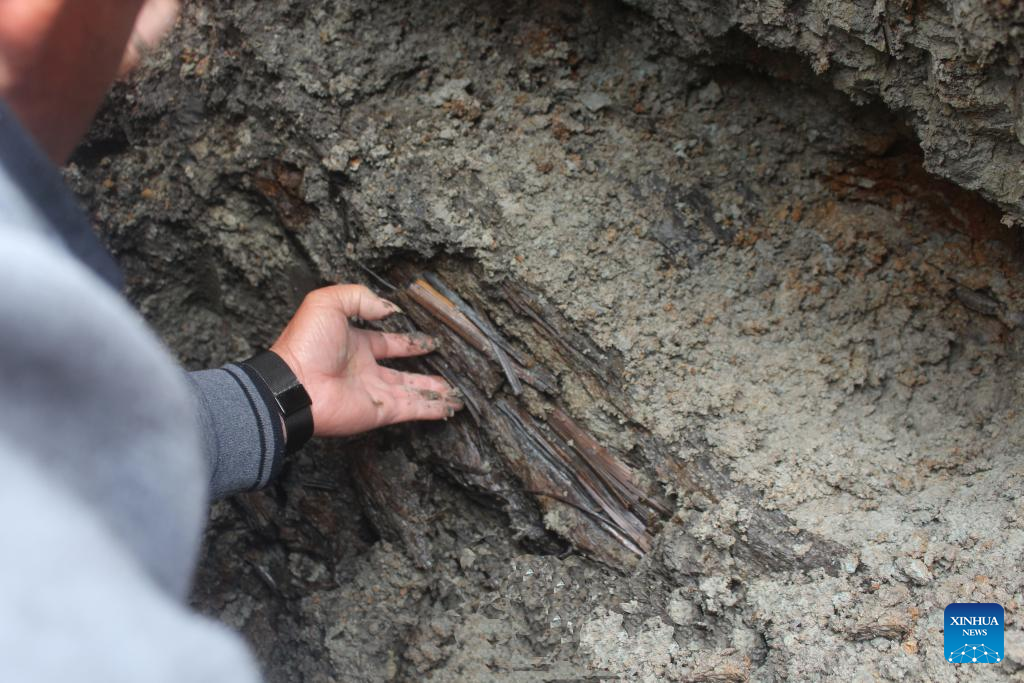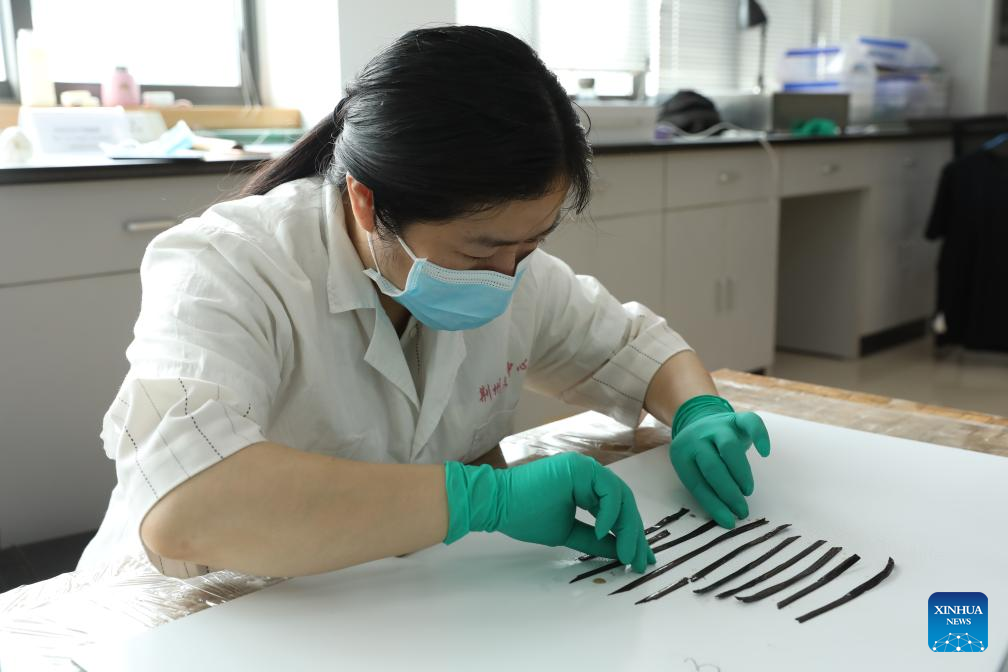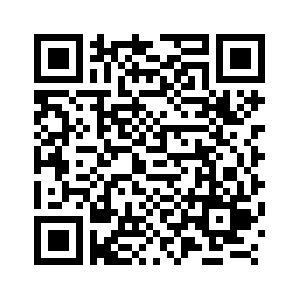
An archaeologist sorts out bamboo slips at a tomb in the city of Jingzhou, central China's Hubei Province, May 6, 2023. (Jingzhou Museum/Handout via Xinhua)
WUHAN, Dec. 22 (Xinhua) -- The latest archaeological discovery has noted that the pithy multiplication formula that every Chinese preteen learns to recite has a history of 2,300 years.
The mathematic formula, written on a piece of bamboo slip, was unearthed from a tomb in the city of Jingzhou, central China's Hubei Province.
The formula, which dates back to the 4th century BC during the Warring State Period (475-221 BC), precedes another piece discovered in central Hunan Province by approximately a century, said Yang Kaiyong, the leading archaeologist of the tomb's excavation project.
Scientists have used infrared scanning to reveal the words on the slip as "five times seven is thirty plus five, four times seven is twenty plus eight, three times seven is twenty plus one."
Thousands of bamboo slips holding over 30,000 characters ranging from mathematics, literature, and animal husbandry to medicines have been discovered in the tomb.
Tan Jingnan, a historian with Jianghan University, said the pithy multiplication formula was already popular during the Warring State Period when Chinese government officials used it to calculate production and properties figures. ■

An archaeologist establishes an order of bamboo slips unearthed at a tomb in the city of Jingzhou, central China's Hubei Province, May 18, 2023. (Jingzhou Museum/Handout via Xinhua)



